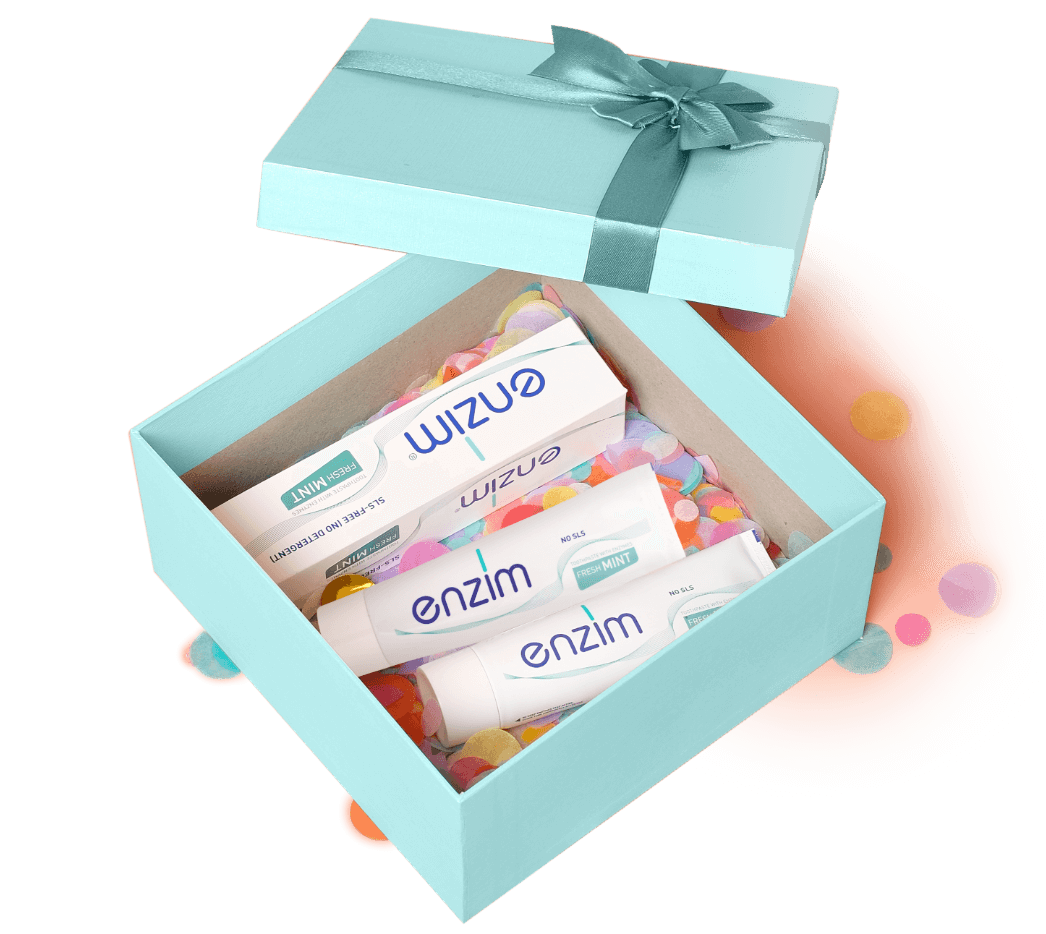How to Use Toothpaste Effectively for Gum Disease

How to Use Toothpaste Effectively for Gum Disease - Enzim Singapore
Gum disease, also known as periodontal disease, is a common oral health issue that can lead to gum inflammation, bleeding, and even tooth loss if left untreated. While maintaining regular dental visits is crucial, using toothpaste effectively as part of your oral care routine plays a significant role in preventing and managing gum disease. This article explores how to use toothpaste to its full potential for healthier gums.
Choosing the Right Toothpaste for Gum Disease
The first step to using toothpaste effectively is selecting the right product. Toothpaste designed for gum health includes ingredients that target the causes of gum disease, such as plaque and bacteria. Look for the following features:
Key Ingredients
-
Stannous Fluoride: Strengthens enamel, reduces gum inflammation, and fights bacteria.
-
Zinc Compounds: Helps control plaque and tartar buildup.
-
Essential Oils: Natural antibacterial properties to reduce gum irritation.
-
Aloe Vera: Soothes inflamed gums and promotes healing.
-
Enzymatic Formulas: Boost saliva’s natural defences against bacteria, as found in products like Enzim Toothpaste.
-
Antibacterial Agents: Combat the bacteria responsible for gum inflammation.
Preparing for Brushing
Effective toothpaste use starts with proper preparation. Here’s what to do before you brush:
-
Rinse Your Mouth: Rinse with water to remove loose debris and prepare your mouth for brushing.
-
Choose the Right Toothbrush: Use a soft-bristled toothbrush to avoid damaging your gums. Electric toothbrushes are also effective at removing plaque.
-
Use the Correct Amount of Toothpaste: A pea-sized amount is sufficient for adults. For children under six, use a smear of toothpaste to prevent excessive fluoride ingestion.
Brushing Techniques for Gum Disease
Using the right technique is just as important as the toothpaste itself. Follow these steps to ensure you’re brushing effectively:
1. Position Your Toothbrush Correctly
Hold your toothbrush at a 45-degree angle to your gums. This allows the bristles to reach under the gumline where plaque accumulates.
2. Use Gentle Circular Motions
Brush using small, circular motions instead of aggressive back-and-forth scrubbing. This helps to remove plaque without irritating your gums.
3. Brush All Surfaces
Ensure you brush the outer, inner, and chewing surfaces of your teeth. Don’t forget to clean behind your back molars, where plaque often builds up.
4. Focus on the Gumline
Spend extra time brushing along the gumline, as this is where plaque tends to accumulate and cause gum disease. Be gentle to avoid damaging delicate gum tissue.
5. Brush for Two Minutes
Use a timer or electric toothbrush with a built-in timer to ensure you brush for the recommended two minutes.
Complementing Toothpaste Use with Flossing and Rinsing
Toothpaste alone can’t remove all the plaque and bacteria that cause gum disease. Complement your brushing routine with:
-
Flossing: Clean between your teeth daily to remove plaque and food particles that your toothbrush can’t reach.
-
Using Mouthwash: An antibacterial mouthwash can help kill germs and reduce gum inflammation. Use it after brushing and flossing for best results.
-
Tongue Cleaning: Bacteria can also accumulate on your tongue, so clean it daily with a tongue scraper or your toothbrush.
Tips for Maximising Toothpaste Benefits
-
Don’t Rinse Immediately After Brushing: Spit out excess toothpaste but avoid rinsing with water straight away. This allows the fluoride to stay on your teeth longer for added protection.
-
Brush Twice a Day: Morning and evening brushing is essential for keeping plaque at bay.
-
Replace Your Toothbrush Regularly: Change your toothbrush or brush head every three months or sooner if the bristles are frayed.
-
Store Toothpaste Properly: Keep your toothpaste in a cool, dry place with the cap tightly closed to maintain its effectiveness.
Common Mistakes to Avoid
Even with the right toothpaste and technique, certain mistakes can undermine your efforts. Avoid these common errors:
-
Using Too Much Toothpaste: Excess toothpaste can make brushing messy and less effective.
-
Brushing Too Hard: Aggressive brushing can damage your gums and enamel.
-
Neglecting Back Teeth: Ensure you brush all areas of your mouth, including hard-to-reach molars.
-
Skipping Night-Time Brushing: Bacteria multiply quickly while you sleep, so brushing before bed is crucial.
When to See a Dentist
If you notice persistent gum disease symptoms such as bleeding, swelling, or bad breath despite your oral care efforts, consult your dentist. They can provide professional cleaning and recommend further treatments to manage your condition.
Conclusion
Gum disease is a serious oral health issue, but with the right approach, it can be prevented and managed effectively. Toothpaste is a powerful tool in this fight, especially when used correctly. By following the tips outlined in this article and combining your brushing routine with flossing and mouthwash, you can improve your gum health and prevent gum disease from progressing.
Remember, oral hygiene is a daily commitment. With the right toothpaste and consistent care, you can enjoy healthier gums and a brighter smile for years to come. Protect yourself against gum disease by taking action today!



